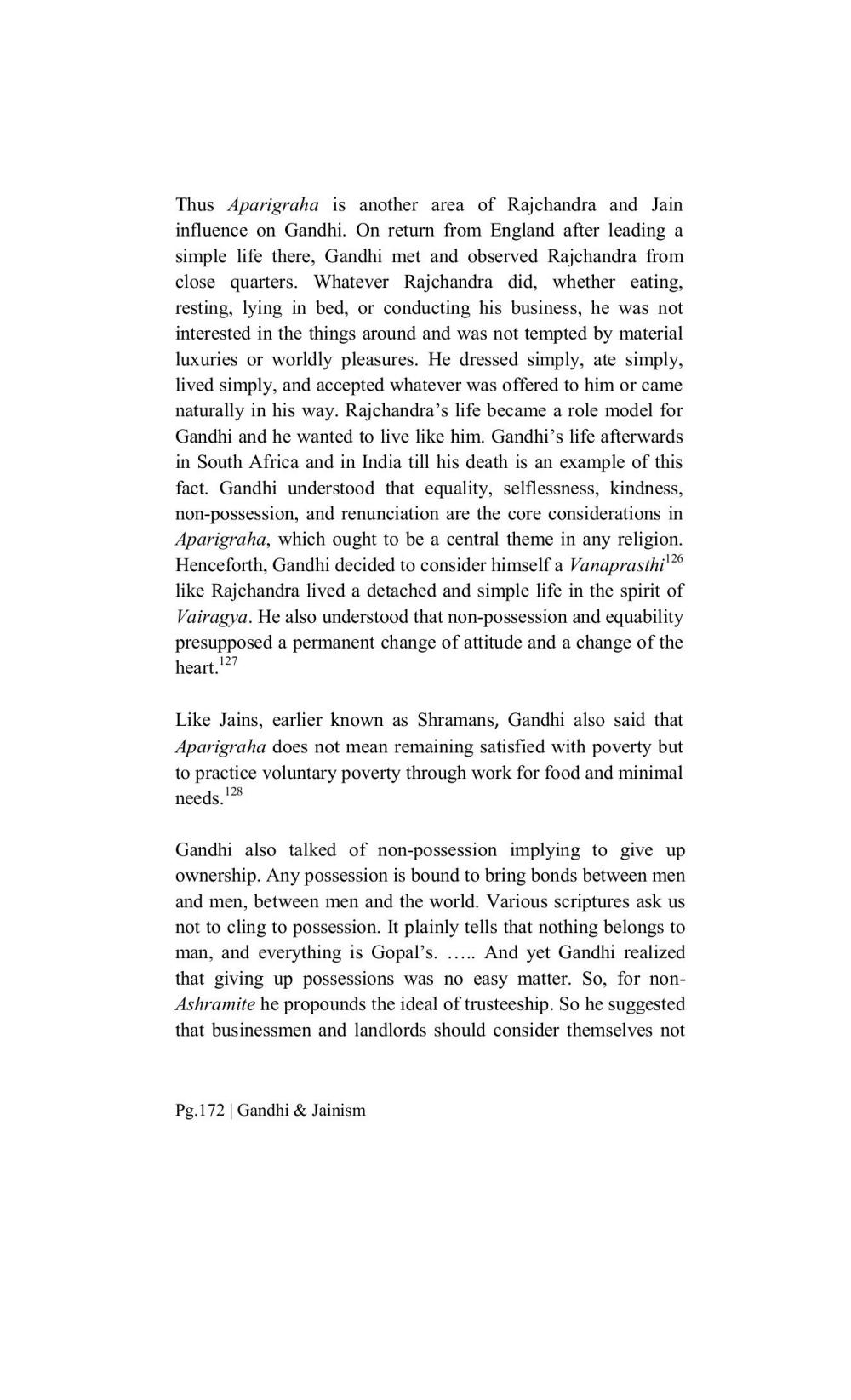________________
Thus Aparigraha is another area of Rajchandra and Jain influence on Gandhi. On return from England after leading a simple life there, Gandhi met and observed Rajchandra from close quarters. Whatever Rajchandra did, whether eating, resting, lying in bed, or conducting his business, he was not interested in the things around and was not tempted by material luxuries or worldly pleasures. He dressed simply, ate simply, lived simply, and accepted whatever was offered to him or came naturally in his way. Rajchandra's life became a role model for Gandhi and he wanted to live like him. Gandhi's life afterwards in South Africa and in India till his death is an example of this fact. Gandhi understood that equality, selflessness, kindness, non-possession, and renunciation are the core considerations in Aparigraha, which ought to be a central theme in any religion. Henceforth, Gandhi decided to consider himself a Vanaprasthi 26 like Rajchandra lived a detached and simple life in the spirit of Vairagya. He also understood that non-possession and equability presupposed a permanent change of attitude and a change of the heart. 127
Like Jains, earlier known as Shramans, Gandhi also said that Aparigraha does not mean remaining satisfied with poverty but to practice voluntary poverty through work for food and minimal
needs, 128
Gandhi also talked of non-possession implying to give up ownership. Any possession is bound to bring bonds between men and men, between men and the world. Various scriptures ask us not to cling to possession. It plainly tells that nothing belongs to man, and everything is Gopal's. ..... And yet Gandhi realized that giving up possessions was no easy matter. So, for nonAshramite he propounds the ideal of trusteeship. So he suggested that businessmen and landlords should consider themselves not
Pg.172 | Gandhi & Jainism




